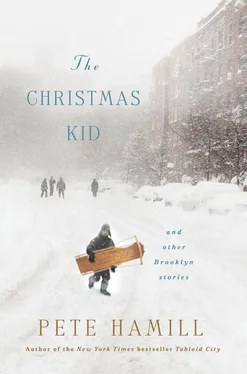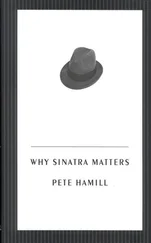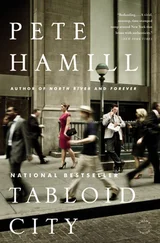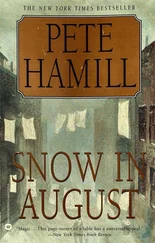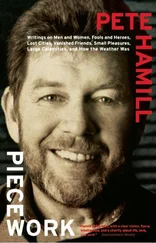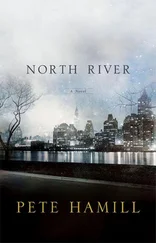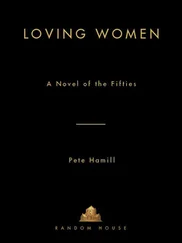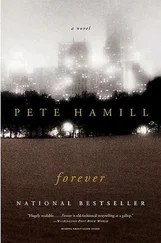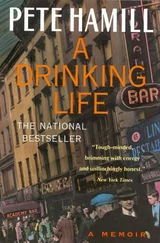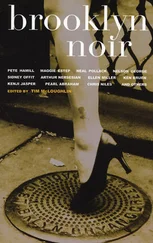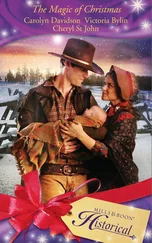The one-armed man turned and peered at him through thick glasses; he was wearing a sleeveless undershirt and a headband to hold back the sweat.
“Yeah?” he said. “Can I help you?”
“Uh, I was, uh, looking in the window, and I was wondering…well, you see, Terry and the Pirates is my favorite and I…”
“Yeah, that Milton Caniff, he’s the best,” Grady said. He had a heavy Brooklyn accent and pronounced the name “Canipp.” He flicked his brush, loaded with red paint, and made a dollar sign in front of a 29. “You know why? He’s an artist . He tells stories, good as any movie. He got great characters, great dialogue. Everything. The best, the best…You take Alex Raymond. He draws Rip Kirby now, used to draw Flash Gordon before the war. Beautiful artist. But no characters, know what I mean? No story . Canipp, he does it all. Hey, kid, do me a favor, all right? Go over the deli, get me a Pepsi. Ice cold, tell ’em.…”
So it began. That summer, the boy served a double apprenticeship: to Seamus Grady, who lived two blocks away, and to Milton Caniff, who lived in the distant world of fame and accomplishment. The boy learned that Grady had been a letterer for comic books all through the war and had to quit when his eyes weakened. And one night, he showed the boy his secret treasure, what he called the Collection, stored in an old wooden chest in the back of the store. These were original drawings, twice the size of a published comic book page, in black and white, with light blue pencil lines showing where the drawings had been roughed in. Grady had lettered these pages: some of them had been drawn by a nineteen-year-old named Alex Toth (“He might end up better than Canipp”), some of them by a master of the brush named Joe Kubert, and some by Will Eisner, who drew The Spirit . He also had photostats, and scrapbooks, and his own collection of comic books and newspaper strips. He also owned work by Roy Crane, the greatest master of the Benday grays, made of dots, and by Noel Sickles, who had helped Caniff when he was starting. He owned Alex Raymond’s old Flash Gordon strips, and Tarzan pages drawn by Burne Hogarth. “These guys are the masters,” Grady said. “Nobody ever did anything like these guys did before.”
For three dollars a week, the boy delivered signs, swept the sidewalk, washed brushes, went for soda and sandwiches. He started showing Grady his own cartoons, copied from Caniff and Crane, and Grady fixed the drawings and showed the boy tricks with brushes. He let the boy pore through the Collection now, reading all the Terry strips from their beginnings in the 1930s. Soon the boy’s head was teeming with characters: Connie and Big Stoop, the Dragon Lady and Burma, Tony Sandhurst and April Kane, and a weird character named Sanjak. They became part of the boy’s life, following him to school in the fall, peopling his imagination just before sleep. The Dragon Lady made him feel funny, and he would look for a woman like Burma the rest of his life.
“What kind of a guy do you think he is?” the boy said one snowy Saturday afternoon that winter. Grady was working on a sign for Gutter’s Shoe Store. “Milton Caniff, I mean?”
“I hear he’s a great guy.”
“You think if I write him a letter, he’d answer?”
“All you can do is try,” Grady said. “Nothin’ to lose, right?”
A month later, the boy came running into the store, waving a brown envelope, unable to get the words out of his mouth. Caniff had sent him an original drawing of Steve Canyon.
“Well, I’ll be damned,” Grady said softly, holding the drawing up to the light. “Isn’t that something?”
That settled it; the boy would be a cartoonist. Caniff had sent him a little booklet, telling young cartoonists to read Robert Louis Stevenson, and Kipling, and Dumas. Grady told him that he would have to go to art school. “Learn to draw everything! ” he said. Through the winter, the boy read his way through the local public library, and by the following spring was making large drawings on newsprint during the hours when Grady left him in charge of the sign shop, while the older man did big window signs in a downtown department store. He always kept the door locked when he was drawing. All the boy’s women looked like the Dragon Lady.
Then one evening in that second summer, while Grady worked at the A&S department store, the boy was drawing in the store. The heat was wilting; great splotches of sweat fell on the newsprint, and the charcoal pencil cut holes in the paper. He opened the door to let a breeze in. About one hour later, two of the Tigers paused at the door. Junior and Cheech. Their faces were bleary, and each was carrying a quart bottle of beer. The boy was suddenly afraid.
“Well, lookit dis,” said Junior. “An ahtist! We got ourself an ahtist, right here in da neighborhood. The boy ahtist!”
“Whyn’t you draw our picture?” Cheech said. They moved into the store, and the boy couldn’t bring himself to move. Then Cheech saw them open the top of the chest, revealing the treasures of the Collection.
“Well, how about this!” he said. “Comics! They got comics in here.”
“Leave them alone,” the boy said. “They’re Mr. Grady’s.”
Junior switched to a singsong voice: “They’re Mr. Grady’s. They’re Mr. Grady’s.…” They started tossing comics back and forth, over the head of the boy, who ran back and forth from one to the other. The more upset the boy became, the more they laughed. Then they started tearing pages out of the precious books, balling them up, pitching them to each other, while Cheech echoed the old radio show: “Terrrreeee an’ da pirates!” They found the precious originals, neatly stacked on the bottom of the trunk, and started scaling them through the air. Then Cheech put his thumb over the top of his bottle, shook it up violently, and let the hot beer fly at Junior. The beer cascaded over Junior’s head and spattered across some unfinished signs. The colors ran like blood.
The boy flew at Junior, frantically throwing small punches, crazy with rage and grief, and Junior shoved him toward Cheech, and Cheech kicked him, and then Junior knocked him down. They were in a snarling fury now, and they pulled over the taboret, spilling poster colors and water over the floor and onto the ruined comics. They sprayed the signs one final time with beer, and went laughing into the evening.
The boy sat there crying harder than he ever had before.
He was still there when Grady came in, and he tried to explain, but Grady exploded in injured anger: “Why’d you leave the door open? Why’d you come here, anyway? Lookit this place! You know how long it took me to save this stuff? Why’d you come here? Why? Why?”
The boy ran out to the darkening street. He never went back. That winter, he took another route to school because he couldn’t look at the sign shop ever again without thinking of that terrible summer evening when he’d opened the door to blasphemy. He didn’t become a cartoonist, either, but he had learned things in that shop that he carried with him for the rest of his life. In that place in the gardens of Brooklyn, a one-armed man had given him art.
The Man with the Blue Guitar
LATER, AFTER THE TERRIBLE thing had happened, people in the neighborhood remembered the day that Andreas Vlastopoulos had arrived among them. Marie from the dry cleaner’s remembered that he wore faded jeans and a crisp white shirt, and that it was early summer and the sun gleamed on his yellow hair. Mrs. Caputo remembered that he asked her for directions to the Griffin house, and that his accent was thick and strange, because it wasn’t a German or a squarehead accent and he was so blond. George, the bartender at Rattigan’s, remembered seeing the young man staring up at buildings and street signs as if he were lost. Some remembered his blue eyes, others his battered brown canvas suitcase, tied shut with a rope. They all remembered the blue guitar.
Читать дальше
